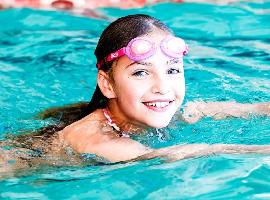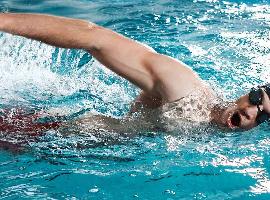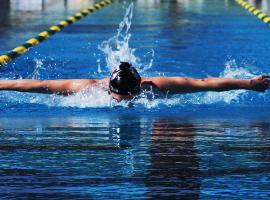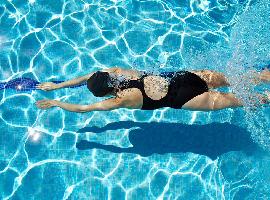 view post
view post
Getting started in swimming and self-study is so easy
- 0
- 0
- 2019-04-03
- By: Jane
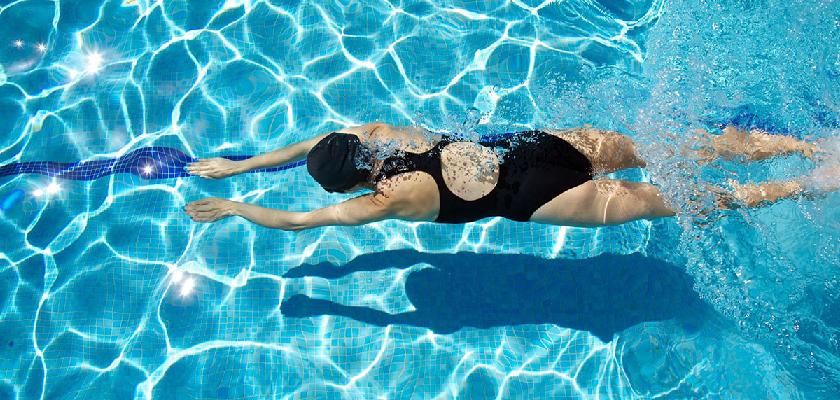
Before you prepare for learning swimming by yourself, you need to have a full understanding of characteristics of human body and water firstly. Only in this way can you make full use of your own advantage and have a command of water characteristics.
As we all know, the proportion of water is 1, while that of human body is from 0.96 to 1.03. And ups and downs of object in water depend on the proportion of object. To be specific, if the proportion of object is bigger than that of water, and then the object will sink. On the contrary, if the proportion of object is smaller than that of water, then the object will float. Thus, if the beginners keep those two things in mind, then they will never fear water.
If you are timid or poor in buoyant force while practicing swimming over water, then you can bring waist buoys made of foam so as to increase buoyant force and make you feel safe.
Walking in water
This is the first practice after the beginner enters the water. And it aims to let you experience the resistance, pressure and buoyant force of water. Furthermore, the beginner will learn how to keep balance in water.
Step One: Holding the pool (bank) side with both hands or holding the hands of your partner and walking in water.
Step Two: With your one hand holding the pool (bank) side or the hands of your partner and the other hand pulling water outward and backward in front of your body, try walking in water.
Step Three:Don’t draw support from any bearings. Symmetrically pulling water backward and outward with two arms in front of chest and then walking forward, sideward and backward with both feet in water.
Learning breathing
If you cannot learn how to breathe while swimming, then you will feel suffocated instead of swimming.
The correct way to breathe while swimming is inhaling with mouth and exhaling with mouth or nose and mouth.
Firstly, stand in water with a depth of should-to-foot and hold the pool (bank) side with your both hands or hold your partner’s hands. Then, take a deep breath with mouth and bury your head into water. Afterwards, try slowly breathing with your nose until you exhale your inside waste gas. Finally, you should raise your head quickly and inhale with mouth.
When you are proficient in the above techniques, you can handle the techniques of inhaling and exhaling continuously, consistently and naturally. In addition, you need to ask yourself to independently complete the stroking technique of slow exhaling and quick inhaling.
Floating in water
The essence of learning floating technique in water is experiencing the buoyant force of human body against water. Then, you should have a basic mastery of balanced capacity of human body in water and get rid of your fear for water.
Crouched floating practice
Firstly, you should stand at water bottom with both feet and take a deep depth. Then, you need to squat down, lower your head and clasp your knees. And your knees should be close to your chest. Afterwards, you should use your forefoot to jump from water bottom. And you are in a position of lowering your head, clasping your knees and bunching up your body. Most importantly, you should relax your body to the greatest extent and float yourself over water in a natural way.
Body-unfolding floating practice:
Firstly, you should stand with your feet hip distance apart and extend your arms straightforward. Then, you need to lean forward and lower your head after taking a deep breath. Meanwhile, you should jump from water bottom with both feet and then float over water in a prone position where you should be wholly relaxed with your arms and legs naturally apart.
Glide floating practice
1. Glide floating practice by jumping from sides: firstly, you should be back on to the pool (bank) side with your hand holding the edge of the pool (bank) and your arm extended straightforward. Meanwhile, you need to stand on one foot and adjoin the pool (bank) side with the other foot. Then, you should lower your head after taking a deep breath. Now, the upper part of your body is in a forward-leaning or prone position. And, you should try to tighten your hip with your thighs and legs in order to approach the pool (bank) side and press your soles on to the pool (bank) side. At the same time, you should extend your arm which holds the pool (bank) side straightforward so as to be together with your forearm. With your head between your arms, you can put forth your strength to jump with your feet and glide straightforward in a streamline way.
Requirement: after jumping from the pool (bank) side, you should fully unfold your body and try to relax yourself.
2. Glide floating practice by jumping from water bottom: firstly, you should apart your feet front and back. Then, you need to extend your arms upward and forward and lean forward the upper part of your body after taking a deep breath. When both your head and shoulder are dipped into water, you can fully jump from pool bottom with your forefoot and then put your feet together. In this way, you can glide straightforward in a streamline way.


